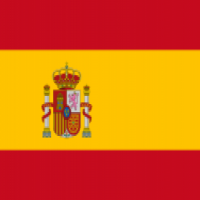Summary:
Spanish nanoscience and nanotechnology research centre has developed an innovative, biocompatible, flexible and modifiable catechol-based membrane for tissue regenerative applications. It shows adhesive properties in water environments, and its chemical properties are tuneable by functionalization with different (bio)molecules. Membrane thickness and size can be controlled by reaction conditions, easy to scale-up. Partners interested in research collaborations or license agreements are sought
Description:
The Catalan (Spanish) research centre is a non-profit global leader organization, focused on the newly-discovered physical and chemical properties that arise from the behaviour of matter at the nanoscale.
The rising prevalence of chronic diseases, genetic disorders, and cancer increases generates higher demands of new medical products to face regeneration of damaged tissues. Currently the are no specific therapies based on tissue regeneration. This is especially relevant in osteoarthritis, where palliative and chirurgic articulation substitutions solutions are applied, and chronic wounds or burn trauma cases, where skin grafts with several drawbacks associated are applied (such as lack of adherence and necrosis or lack of sensory capacity of the resulting skin). Market alternatives of the product are hydrogels, but they are generally fragile systems that require to be coated with other materials for making them biocompatible or adhesive, multi-steps method fabrication and high production costs.
The membranes presented are obtained by copolymerisation between catechol-derivates and amino-based molecules. They are flexible and show adhesive properties in water environments. The methodology for fabricating these bioinspired membranes is performed using commercial compounds and under mild conditions, a straightforward procedure easily scalable, as the membranes are formed in the air-water interface without using neither a multi-step approach nor harmful solvents. Once the membranes are formed, they can be properly isolated, handled and transferred to the final tissue or substrate. The thickness of the films can be controlled over time, achieving sizes from tens of nanometers to a few micrometers. The tuneability of the reactivity of the membranes allows for in situ and post-functionalization, making possible the inclusion of molecules and biomolecules of interest. Worth to mention, the membranes presented different topography depending on the side, allowing them to be functionalized with different (bio)molecules on each side in addition to directly impact in their biological behaviour.
The membranes have three main applications:
• Research and development in biotechnology: the membrane can be used in research experimental and clinical development laboratories, in the biotechnology and nanotechnology sectors.
• Veterinary and medical applications: adhesives, implants and dressings.
• Cell regenerative therapies
The research centre is looking for companies in the pharma and medical devices sectors, interested in leading proof of concept studies to validate the technology for specific applications under a research collaboration or willing to bring the technology onto the market under a license agreement.
Type (e.g. company, R&D institution…), field of industry and Role of Partner Sought:
The research centre is looking for companies from the pharma, medical devices, tissue regenerative therapies and research and development in biotechnology sectors interested in either licensing the patent (under a license agreement) or leading proof of concept studies to validate the technology for specific applications (under a research cooperation agreement).
Stage of Development:
Prototype available for demonstration
Comments Regarding Stage of Development:
The entity has performed in vivo assays in experimental rats to address different aspects: i) bioadhesion, ii) tolerability and biocompatibility and iii) regeneration capacity. Results until now showed no signal of rejection, in terms of inflammation, erythema or edema formation. The regeneration capacity of the membranes has been evaluated in damaged cartilage, resembling osteoarthritis conditions.
In addition, membranes adhesion was tested in ex vivo tissues in humid conditions.
In vitro assays demonstrated excellent cell viability and adhesion of commercial cell lines derived from different human tissues (fibroblasts, adipose and central nervous system cells, and stem cells, among others).
IPR Status:
Patent(s) applied for but not yet granted
Comments Regarding IPR Status:
European Patent application filed on June 2021
External code:
TOES20211006001








